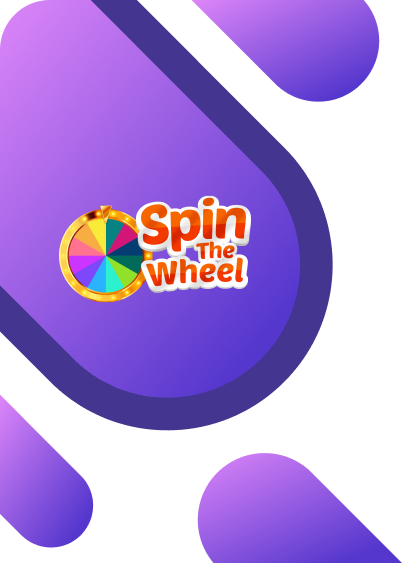Spin Wheel vs. Digital Alternatives: Pros and Cons for Events ????????????
When it comes to events, giveaways, and audience engagement, nothing beats the thrill of a spin wheel ????. Whether it’s a physical carnival-style wheel at a trade show or a flashy digital version on a screen, spin wheels make people excited.
But in the digital age, planners often ask: “Should I use a traditional spin wheel or go digital?” ???? Both have strengths and weaknesses, and the best choice depends on your goals, audience, and budget.
This guide breaks down the pros and cons of spin wheels vs. digital alternatives, with tips, stories, and expert insights to help you make the best choice for your next event.
???? The Classic Spin Wheel: Old-School Charm
The traditional spin wheel is the big, colorful wheel you’ve seen at fairs, carnivals, and trade booths. Participants physically spin it, and the clicking sound of the flapper creates tension before landing on a prize ????.
Where it shines:
-
Trade shows & conferences
-
Charity fundraisers
-
School fairs
-
In-store promotions
Main appeal: It creates a tangible, hands-on experience that people love.
???? Digital Alternatives: Modern & Interactive
Digital spin wheels are software or web-based tools that simulate the wheel of fortune experience. They can be projected on big screens, embedded in apps, or used for virtual events.
Examples include:
-
Custom gamification tools built for brands
Where it shines:
-
Virtual events & webinars
-
Hybrid conferences
-
Online contests
-
Large-scale giveaways with thousands of participants
Main appeal: Digital wheels offer flexibility, customization, and scalability.
???? Comparison Table: Spin Wheel vs Digital
| Feature | Physical Spin Wheel ???? | Digital Spin Wheel ???? |
|---|---|---|
| Engagement | High (hands-on, tangible) | High (flashy, customizable) |
| Accessibility | On-site only | Global, online participation |
| Cost | Medium–High (buy/ship wheel) | Low–Medium (subscription/apps) |
| Setup | Physical setup required | Quick, plug-and-play |
| Scalability | Limited by location | Unlimited participants |
| Customization | Limited (design fixed) | Unlimited (colors, logos, sounds) |
| Reliability | Very reliable (no tech) | Can glitch with bad Wi-Fi |
| Novelty Factor | Retro charm ???? | Tech wow-factor ✨ |
???? Both options are effective, but they serve different event goals.
???????? Real-Life Anecdotes
At a local mall, I saw a giant physical spin wheel where shoppers could win store vouchers. The click-click-click sound built anticipation, and the line grew long just to spin it. Kids especially loved it ????.
In contrast, during a virtual conference I attended in 2022, the host used a digital spin wheel projected on screen for prize giveaways. It kept remote participants excited and connected, even though they weren’t physically present.
Lesson? Physical = emotional engagement, Digital = accessibility.
✅ Pros & Cons of Physical Spin Wheels
Pros:
-
Tangible, exciting experience ????
-
No Wi-Fi or electricity required
-
Retro carnival vibe ????
-
Great for photo ops & brand visibility
Cons:
-
Limited to on-site participants
-
Expensive to buy/ship a large wheel
-
Takes physical space
-
Limited customization once designed
✅ Pros & Cons of Digital Spin Wheels
Pros:
-
Global reach ????
-
Easy to set up, customize, and brand
-
Scalable to thousands of participants
-
Integrates with livestreams, apps, or social media
Cons:
-
Requires internet connection
-
Can feel “less real” than a physical wheel
-
Technical glitches possible
-
Older participants may find it less exciting
???? Metaphor: Spin Wheels = Cooking Styles ????
Think of it this way:
-
Physical spin wheel = Grandma’s cooking ???????? – warm, nostalgic, familiar.
-
Digital spin wheel = Modern restaurant ????️✨ – sleek, scalable, customizable.
Both serve delicious meals, but the vibe is totally different.
???? Expert Insights
Event planners suggest using both where possible. According to Event Manager Blog, hybrid gamification boosts engagement by giving people on-site and online a chance to win.
???? Use Cases: Which Should You Pick?
-
Trade shows: Physical wheel for booth traffic.
-
Virtual webinars: Digital wheel for global prize draws.
-
School events: Physical wheel for fun & learning.
-
Corporate contests: Digital wheel for fairness & automation.
-
Hybrid events: Use both for maximum reach.
❓ 10 Frequently Asked Questions (FAQs)
1. Are digital spin wheels fair?
Yes, most use randomization algorithms.
2. How much does a physical spin wheel cost?
Anywhere from $100–$500 depending on size.
3. Can I use digital wheels offline?
Some apps allow it, but most require internet.
4. Do people prefer physical or digital?
Depends on the event—physical is nostalgic, digital is convenient.
5. Can I brand a digital wheel?
Yes, logos, colors, sounds can all be customized.
6. Are physical wheels more engaging?
For kids and on-site crowds, yes.
7. Do digital wheels work for hybrid events?
Absolutely, they connect in-person and online audiences.
8. What’s the best app for digital spin wheels?
Wheel of Names and Spin the Wheel App are popular.
9. Can spin wheels be rigged?
Physical wheels can be adjusted; digital ones depend on the software.
10. Should I invest in both?
If budget allows, yes—so you can cover all event formats.
???? Conclusion: Which Spin Wheel Is Right for You? ????????
The debate between physical spin wheels vs. digital alternatives isn’t about which is “better” but about which fits your event goals.
-
Want hands-on nostalgia and in-person hype? ???? Go physical.
-
Need scalable, global, hybrid engagement? ???? Go digital.
-
Want the best of both worlds? ???? Use both.
Think of spin wheels as tools in your event toolkit. The more options you have, the more unforgettable your event will be ✨.



